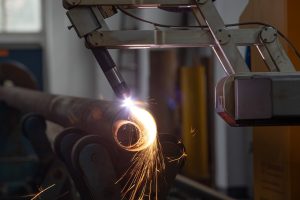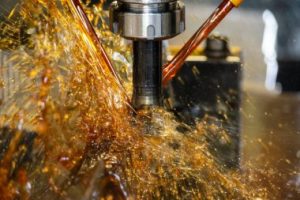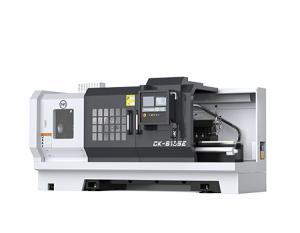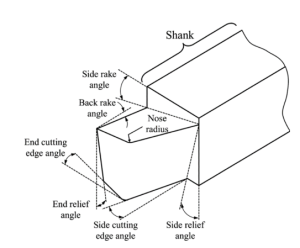In modern manufacturing, with the increasing demand for automation and high-precision machining, temperature management during the cutting process has become a key factor influencing tool life, machining accuracy, and production efficiency. In high-speed cutting and hard material machining, the high-temperature friction between the tool and workpiece not only accelerates tool wear but also causes thermal deformation of the workpiece, affecting the final product quality. This challenge has driven manufacturers to continuously seek innovative cooling technology to achieve more efficient and environmentally friendly machining methods, pushing the industry towards smarter and more sustainable development.
Cooling technology optimizes cutting efficiency and tool life by effectively controlling the temperature in the cutting zone. Appropriate cooling methods, such as cryogenic machining, Minimum Quantity Lubrication (MQL), and nanofluid cooling, help reduce tool wear, enhance tool hardness and strength, and thus extend tool life. At the same time, cooling technology lowers cutting temperatures, reduces thermal deformation, improves surface quality, and ensures machining accuracy. A well-chosen cooling method can also reduce costs while increasing production efficiency.
This article will explore the application background, advantages and disadvantages, and selection principles of different cooling methods. It will also provide guidelines for selecting the right coolant based on the specific machining characteristics of different materials.
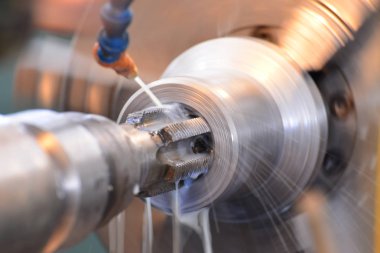
The Necessity of Cooling
During cutting, the contact between the tool and workpiece generates significant friction, which causes a rapid rise in temperature in the cutting area. If the temperature is not reduced in time, it will accelerate tool wear, affect machining accuracy, and even lead to tool breakage. Therefore, effective cooling can not only lower the temperature of the tool and workpiece but also improve the surface finish of the tool, reduce thermal deformation of the material, and ensure the quality of the machining process.
Common Cooling technology
Dry Cutting
Dry cutting refers to a process where no cooling fluid or lubricant is used. This method has environmental benefits because it does not require traditional cutting fluids. However, dry cutting typically generates more heat, which accelerates tool wear and shortens tool life. While dry cutting is used in some applications due to its simplicity and cost-effectiveness, it may not be suitable for cutting hard materials, especially when heat control is necessary.
Low-Temperature Machining
Low-temperature machining reduces the heat generated during the cutting process. Cooling systems like liquid nitrogen or carbon dioxide lower the temperature of the tool and workpiece, reducing tool wear and improving the surface quality of the workpiece. Low-temperature machining is especially useful for high-strength alloys and titanium alloys, which can be damaged at high temperatures. However, the high cost of low-temperature cooling equipment limits its widespread use in mass production.
Minimum Quantity Lubrication (MQL)
Minimum Quantity Lubrication (MQL) is an advanced cooling technology that sprays a small amount of lubricant mist directly onto the cutting area. This reduces the amount of cooling fluid used. MQL lowers cutting temperature, extends tool life, and reduces environmental impact. Compared to traditional flood cooling systems, MQL shows clear advantages in improving tool life and reducing processing costs. MQL is especially suitable for high-speed and high-precision machining, where traditional cooling methods may not be effective or economical.
Air Cooling
Air cooling is a simple and low-cost cooling method that uses compressed air to cool the cutting area. Although this method does not provide the same cooling effect as liquid cooling systems, it is still effective for cutting processes with low to moderate heat generation. Air cooling is often used for cutting softer materials like aluminum, where the tool temperature remains relatively low. Typically, air cooling is combined with other cooling methods like MQL to improve cooling performance.
Nanofluid Cooling
Nanofluid is a cooling medium based on fluids with suspended nanoparticles, such as metal oxides or carbon nanotubes. These nanoparticles enhance the thermal conductivity of the cooling fluid, improving heat dissipation. Compared to traditional cooling fluids, nanofluids have better thermal conductivity, which improves cooling effectiveness while reducing tool wear and extending tool life. Research shows that combining nanofluid with MQL can effectively lower tool temperature during high-efficiency cutting and improve overall machining performance.
Vegetable Oil Cooling
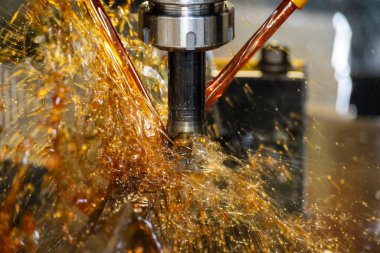
Vegetable oils are gaining attention as an environmentally friendly alternative to traditional cooling fluids. These oils are biodegradable and harmless to the environment. Recent studies show that vegetable oils can effectively replace traditional mineral oils in many machining applications and provide good lubrication. Additionally, vegetable oils help reduce ecological footprints. Bio-based coolants have shown good performance in machining and have become a popular choice for manufacturers looking for more sustainable alternatives.
Air-Assisted MQL with Nanofluid
Air-assisted MQL with nanofluid is an emerging cooling technology that combines air flow, minimum quantity lubrication, and nanofluid to enhance cooling performance. This combined cooling method applies air along with lubricant mist and nanofluid to improve heat dissipation and reduce heat buildup. Research indicates that this method offers significant advantages in high-speed cutting, overcoming challenges in dry cutting, and proving more cost-effective than traditional low-temperature cooling methods.
Choosing the Right Coolant
Cooling Methods for Different Materials
Different materials have different cooling requirements during cutting. The cutting characteristics of aluminum, steel, titanium alloys, and other materials vary, so the type of coolant needed also differs.
Aluminum Alloys
Aluminum alloys generate relatively little heat during cutting. Therefore, air cooling or minimum quantity lubrication (MQL) techniques are often sufficient. Air cooling works well in high-precision machining. For high-speed cutting, MQL can effectively reduce friction, lower cutting temperatures, and extend tool life. Since aluminum has good thermal conductivity, excessive coolant may increase costs, so it is usually better to use less coolant when machining aluminum.
Steel
Steel generates more heat during cutting, especially when cutting hard steels or at high speeds. To effectively control temperature, steel machining usually requires flood cooling or liquid cooling systems, such as water-based coolants. Water-based coolants have strong thermal conductivity and can quickly dissipate heat from the cutting area, reducing tool wear due to heat. They also offer good lubrication, helping improve machining quality.
Titanium Alloys
Titanium alloys generate high temperatures during cutting and are hard and brittle, which can cause significant tool wear. Therefore, titanium machining requires more effective cooling. Low-temperature machining, liquid nitrogen cooling, or efficient MQL techniques can lower temperatures and reduce tool wear. Liquid nitrogen cooling rapidly reduces the temperature, preventing damage to titanium alloys at high temperatures and extending tool life.
Other High-Strength Alloys
For high-strength alloys such as cobalt-chromium alloys and hardened steels, low-temperature cooling or MQL combined with nanofluids are common cooling methods. Nanofluids improve the thermal conductivity of the coolant, reducing tool wear and extending machining time. Using low-temperature coolants can effectively control the temperature in the cutting zone, protecting both the tool and workpiece surface.
How to Choose the Right Coolant to Balance Cost and Performance
Choosing the right coolant is not only a technical decision but also involves cost control and environmental considerations. A suitable coolant can provide the required cooling effect while maintaining cost-effectiveness, reducing wear, and improving machining efficiency. When selecting a coolant, consider the following factors:
Performance Requirements
First, the coolant must meet the specific needs of the machining process. For high-speed cutting or heavy-load machining, the coolant needs strong cooling and lubrication properties. For light-load or low-temperature machining, standard water-based coolants may be sufficient.
Economic Considerations
The price of coolants varies significantly, especially between traditional mineral oils and synthetic coolants. From an economic standpoint, choosing a coolant with a moderate price and controlling its usage and flow rate can effectively reduce production costs. MQL can reduce the amount of coolant used, lower costs, and offer good environmental benefits.
Coolant Lifecycle
The maintenance and replacement frequency of coolants is also an important cost factor. Some coolants require frequent changes or additions, while high-performance coolants may maintain their effectiveness for longer, reducing long-term costs.
Multipurpose Coolants
Choosing coolants that can be used for multiple materials and machining methods can help reduce inventory costs. For example, water-based coolants with good lubrication and cooling properties can be used for both aluminum alloy and steel machining.
The Impact of Cooling Technology on Cutting Performance
Extending Tool Life
One of the main functions of cooling technology is to reduce the temperature in the contact area between the tool and the workpiece. High temperatures accelerate tool wear, especially during high-speed cutting, where the thermal stability of the tool is affected. Effective cooling can maintain the temperature of the cutting area within a reasonable range, reducing both thermal and mechanical wear on the tool. Proper coolant selection and precise flow control can significantly extend the tool’s lifespan.
Improving Cutting Efficiency
Cooling technology can effectively lower cutting temperatures and prevent high temperatures from negatively affecting tool performance. At lower temperatures, the hardness and strength of the tool material are better maintained, reducing cutting forces and making the cutting process smoother. This allows for higher cutting speeds during machining, which in turn increases production efficiency.
Reducing Thermal Deformation and Improving Surface Quality
The high temperatures generated during cutting can cause thermal deformation of the workpiece, which affects surface quality and machining accuracy. Coolants not only reduce the temperature of the workpiece and relieve thermal stress, but they also improve the surface finish, reducing roughness and preventing surface cracks and distortions.
Controlling Cutting Force and Temperature Rise
The cutting force directly impacts tool durability and machining stability. Excessive cutting force increases cutting temperature, leading to heat accumulation and accelerating tool wear. Coolants lower the temperature in the cutting area and help control fluctuations in cutting force, maintaining the stability of the machining process.
Environmental and Cost Control
As environmental regulations become more stringent, traditional mineral oils and chemical coolants are gradually being replaced by more eco-friendly coolants. Biobased coolants, such as vegetable oils and synthetic coolants, not only improve tool life and cutting performance but also offer the advantage of being biodegradable, thus reducing environmental pollution.
Comprehensive Optimization of Cutting Performance
The choice of cooling technology not only affects tool life and cutting efficiency but also plays a decisive role in the overall performance of the cutting process. The right cooling method can effectively balance tool performance, cutting speed, and workpiece quality, achieving comprehensive optimization of the cutting process.
Application Limitations of Cooling technology
Air Cooling:
Air cooling is a low-cost and simple method, but its effectiveness is limited at high temperatures, especially during high-speed cutting and hard material processing. It cannot effectively remove excessive heat, which may lead to increased tool wear or poor surface quality of the workpiece. Therefore, it is more suitable for processes with lower cutting forces and temperatures, such as soft metals or low-speed cutting.
Low-Temperature Cooling:
Low-temperature cooling, such as liquid nitrogen or liquid carbon dioxide, can significantly reduce cutting temperatures and is ideal for difficult-to-machine materials like high-strength alloys and titanium alloys. However, it is costly and requires specific equipment configurations, making it less suitable for all materials, especially in large-scale production where it may not be cost-effective.
Minimum Quantity Lubrication (MQL):
MQL works by precisely spraying small amounts of lubricating oil mist to lower cutting temperatures and reduce coolant usage. It is particularly effective in high-speed and high-precision machining. However, in large-scale cutting or high cutting force and high-temperature environments, its cooling effect may not be sufficient.
How to Avoid Compatibility Issues Between Cooling Systems and Machining Systems?
Different cooling systems require different equipment and pipeline configurations. It is crucial to ensure that the cooling method is compatible with the machining equipment, such as CNC machines, lathes, and milling machines. For example, some cooling systems may require additional nozzles, flow regulation devices, or air pressure systems. Understanding the equipment interfaces and flow specifications in advance can help prevent cooling inefficiencies or system failures.
How to Adjust Cooling technology According to Machining Stages?
In complex machining processes, cooling strategies should be adjusted according to different cutting stages.
- Roughing Stage: This stage typically requires stronger cooling to remove a large amount of heat, reduce tool wear, and control workpiece deformation. Suitable cooling methods include flood cooling or low-temperature cooling.
- Finishing Stage: During finishing, cutting forces are lower and temperatures are more controlled. Methods like MQL or air cooling can be used to maintain machining precision, reduce coolant usage, improve efficiency, and lower costs.
Conclusion
Cooling technology plays a crucial role in modern machining, directly affecting tool life, cutting efficiency, processing quality, and cost control. By selecting the right cooling method based on material properties, machining requirements, and economic considerations, manufacturers can effectively optimize the machining process, extend tool life, and increase production efficiency. From dry cutting to low-temperature processing, minimum quantity lubrication (MQL), air cooling, and nanofluid cooling, each cooling method has its unique application scenarios and advantages.
For manufacturers focused on efficiency, sustainability, and environmental friendliness, choosing the right cooling technology helps improve overall production capacity and market competitiveness. In this regard, MINNUO offers high-quality cooling solutions and has earned an excellent reputation across various industries. Whether you need cooling systems for materials like aluminum alloys, steel, or titanium, or customized advanced cooling technologies, MINNUO can provide expert advice and support.
To learn more about our products, please visit the MINNUO website for more professional technical information and service support.







